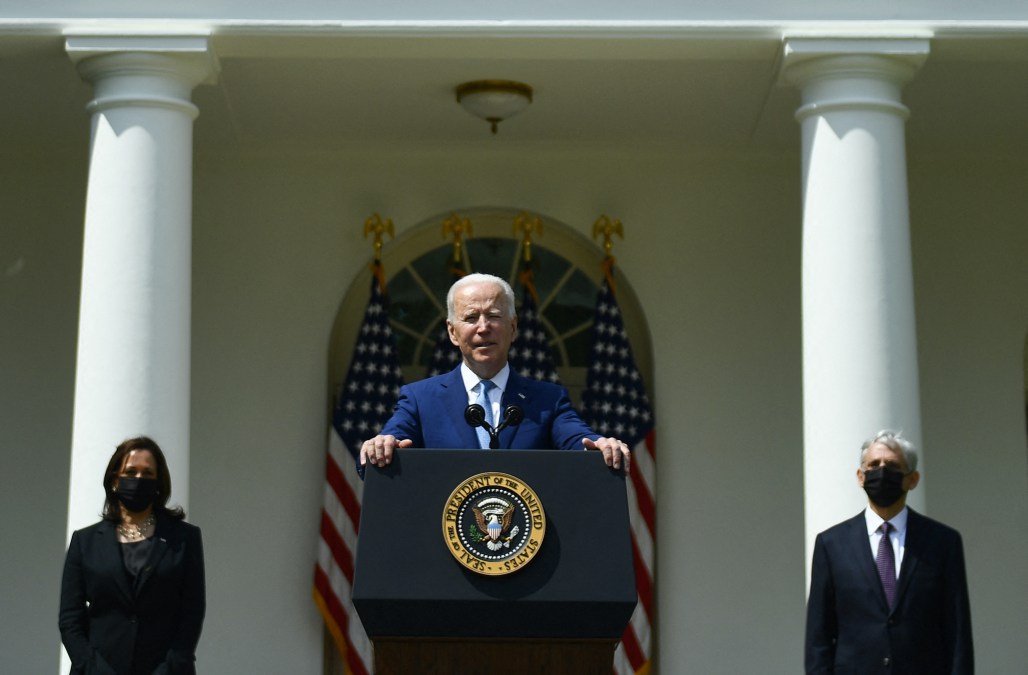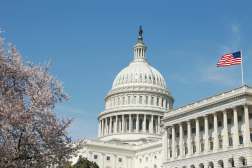Biden administration proposes record $171.3B for R&D across civilian agencies

The Biden administration proposed the largest-ever increase in non-defense research and development spending as it looks to out-compete China in emerging technologies with its first budget released Friday.
Officials likened the $171.3 billion proposed for R&D across more than 20 federal agencies —which represents a 9% increase from prior year proposals — to “space race”-era spending. It comes in addition to American Jobs Plan investments of $50 billion for the National Science Foundation, $40 billion for laboratory upgrades across the country, and $30 billion for general innovation and job creation.
Historic increases in foundational R&D at scientific agencies like NSF, NASA, the Department of Energy, and the National Institute of Standards and Technology accompany growing concern that the U.S. has lost its global edge in the development of key technology such as satellites and supercomputers.
“[T]he nation is falling behind its biggest competitors in research and development, manufacturing and training,” reads the budget. “It has never been more important to invest in strengthening the nation’s infrastructure and competitiveness, and in creating the good-paying, union jobs of the future.”
Officials cited “overly restrictive” budget caps during the last decade for diminishing the country’s global advantage in emerging technologies.
The fiscal 2022 budget proposes a $7.7 billion increase to the Department of Health and Human Services‘ R&D budget, bringing the total to $51.2 billion, an 18% jump.
Of that figure, $8.7 billion would go to the Centers for Disease Control and Prevention, its largest increase in two decades, for improving disease surveillance — notably by modernizing public health data collection nationwide. A separate $1 billion is proposed for foreign assistance in crosscutting research and viral discovery programs to detect outbreaks that could lead to pandemics.
An additional $6.5 billion is proposed for the creation of the Advanced Research Projects Agency for Health, which would be modeled after the Defense Advanced Research Projects Agency that helped create the internet. ARPA-H would sit within the National Institutes of Health and research advances in cancer, diabetes and Alzheimer’s treatments.
If the proposals are enacted, the Department of Veterans Affairs would receive a $78 million R&D budget increase to $1.5 billion, $882 million of which would go toward medical and prosthetic, traumatic brain injury, and toxic exposure effects research benefitting disabled veterans.
Another big winner in the Biden budget is the Department of Energy, which would receive a $2.1 billion, or 11% increase, to its R&D budget — bringing the total to $21.5 billion. A portion of that would go toward upgrading the National Laboratories seeking climate and clean energy breakthroughs, as well as competing with China to develop the first exascale supercomputers.
The Biden administration is prioritizing climate R&D with $36 billion in discretionary climate investments, including a proposed $10 billion, a 30% increase, for non-defense clean energy innovation. The goal is to achieve a net-zero carbon economy by 2050.
Another $7 billion, representing a $1.5 billion increase, would go to the National Oceanic and Atmospheric Administration for improving climate observation and forecasting and data provided to decision-makers. Meanwhile the Department of the Interior, NASA and NSF would receive another $4 billion to fund climate science.
The budget also proposes $1 billion for an Advanced Research Projects Agency for Climate and invests in the existing Advanced Research Projects Agency for Energy.
A smaller $600 million is proposed for electric vehicles and charging infrastructure at 18 agencies. The General Services Administration would see dedicated funds for other agencies, and the U.S. Postal Service would receive money for charging infrastructure.
Other R&D budget upticks of note would be a $1.3 billion increase at NASA to $14.6 billion, $765 million increase at NSF to $8.2 billion, and a $621 million increase at the Department of Commerce that houses NIST to $2.7 billion.
NASA would bolster everything from its next-generation satellite projects to its efforts to broaden diversity and inclusion in the science, technology, engineering and mathematics fields.
An additional $50 billion proposed for NSF in the American Jobs Plan would go, in part, toward creating a technology directorate that will collaborate and build on existing semiconductor, advanced computing and communications, energy, and biotechnology programs across government.
The request for NIST includes program increases for measurement research and services across advanced communications, climate and energy, trustworthy artificial intelligence, quantum information science, engineering, semiconductor metrology, and the bioeconomy.
Biden’s budget reemphasized his administration’s effort to foster scientific integrity and evidence-based decision-making across agencies.
“The administration’s commitment to evidence-based policymaking and program evaluation is reflected in the prioritization and design of the budget’s historic investments in addressing climate change, environmental justice, health security, and pandemic preparedness and will be equally central to implementing these initiatives,” reads the document. “Agencies’ learning agendas and annual evaluation plans should reflect their plans to build evidence in these and other priority areas.”
Another administration goal with the budget was to improve the country’s long-term finances while making critical investments in emerging technologies, said Shalanda Young, acting director of the Office of Management and Budget, on a call with reporters Friday morning.
Officials expect the budget’s corresponding American Jobs Plan and American Families Plan, as budgeted, to fully offset within 15 years.
“This is a very important and forward-looking budget,” said Cecilia Rouse, chair of the Council of Economic Advisors, on the same call. “The policies proposed are premised on the idea that to move forward as a country we need to invest in innovation, and the public sector is critical to building a robust and inclusive economy.”
Speaking to FedScoop, Grant Thornton Public Sector director Kelly Morrison, said the increase in R&D spending suggests an increased commitment from federal government to strength testing projects in their early stages.
“I think it’s a recognition that more needs to be done up front to prove out value and fail fast so that we’re not spending millions of dollars on initiatives that are behind schedule and don’t produce the value intended.
“In order to fix that symptom, more money needs to be invested in that R&D phase,” she said.






